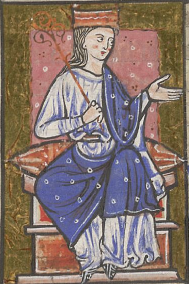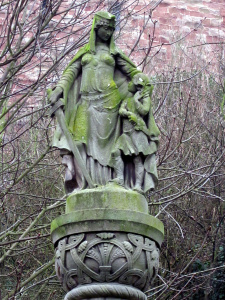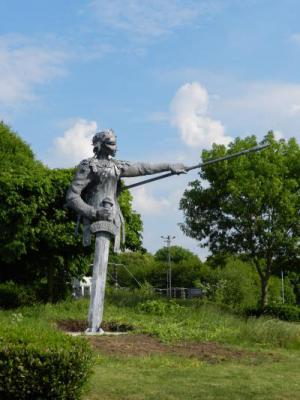Æthelflæd, the Lady of the Mercians, c.870CE – 918

12th June 2018 marked the one thousand and one hundred year anniversary of a Saxon warrior, Lady of the Mercians and eldest daughter of Alfred the Great, King of the Anglo-Saxon kingdom of Wessex.
Nothing is known of Æthelflæd until records show her marriage at the age of fifteen or sixteen. Her mother was Ealhswith, a Mercian noblewoman, whilst her father Alfred, was descended from Wessex royalty.
Alfred spent considerable time fighting off the Vikings, who had first appeared in Britain in 793 CE, when they landed off Dorset and sacked the priory of Lindisfarne. Æthelflæd would have been born at an extremely tense time; when she was around eight years old, her family had to run for their lives to spend four months in the marshes of Somerset after the Vikings, led by their king Guthrum, launched a surprise attack, and came perilously close to capturing them at their winter fortress at Chippenham on 6th January 878.
Months later, with an army of around 3,000 men from Somerset, Wiltshire and West Hampshire, her father roundly defeated Guthrum and his Viking army at the Battle of Edington. Having surrendered, on 15 June, Guthrum and 30 of his surviving soldiers were baptised; Alfred stood as Guthrum’s godfather. By 886, according to the Anglo-Saxon Chronicle, “All the English peoples acknowledged Alfred as their king except those who were still under the rule of the Danes in the North and the East”.
Educated and cultured, she was married at just 16 to Aethelred, Lord of Mercia; he was at least ten years older than her. Apparently, they were ambushed by Vikings en route to their own wedding in an attempt to stop the union; several of her party was killed before they were able to reach the safety of a ditch and fight back. Their marriage strengthened a pre-existing alliance between Mercia and Wessex.
They had one daughter, Aelfwynn, first named on a land charter in 903 CE. According to the monk and renowned 12th century historian William of Malmsbury, (c. 1095– c.1143) the birth was so traumatic that it nearly killed Æthelflæd and left her unable to have any more children.
When her father Alfred died in 899, her younger brother Edward became King. Together, the siblings would work together to drive the Vikings out.

Following her husband’s death in 911, she became Queen of Mercia. Having learned from her mother, she was an able leader, skilled negotiator and military tactician, earning the respect of both the Vikings and the Saxons. She personally led campaigns against the Vikings with her husband in the Midlands and the north.
Ever aware of the threat of Viking attacks, she fortified previously Roman strongholds and built fortified towns. She reconstructed Gloucester from its Roman ruins and laid out its street plan, which still exists today. She also won back lands that had been lost to the Danes including Derby and Leicester. She either rebuilt or founded the county towns of Gloucester, Hereford, Worcester, Chester, Shrewsbury, Warwick, and Stafford. (Details of events in Mercia between 904 and 924 are found in the Mercian Register, part of the Anglo-Saxon Chronicle, three copies of which are held at the British Library).
She violently defeated the Vikings at the Battle of Chester in 907 CE and strove to unite England; (the port was a key trading point for Mercia with Ireland; it was also on the trading route between Viking York and the port of Dublin; whilst the Irish drove the Danes out, some crossed the sea and settled just outside Chester, with a promise that they would behave. They, however, remained unable to keep to their promise of not attacking the town).
Edward’s son, and her nephew, Athelstan, became King of the Anglo Saxons and the first King of England.

She died at Tamworth (for reasons unknown) in 918, just as the Danes in York were on the brink of surrendering their stronghold to her. She was buried at what is now St. Oswald’s Priory in Gloucester. Her daughter was accepted as her successor in an uncontested transference of power – unheard of then – and not again until the English throne passed from Mary I to Elizabeth I in 1558.
Keep an eye out for updates at https://www.tamworthcastle.co.uk/aethelflaed
